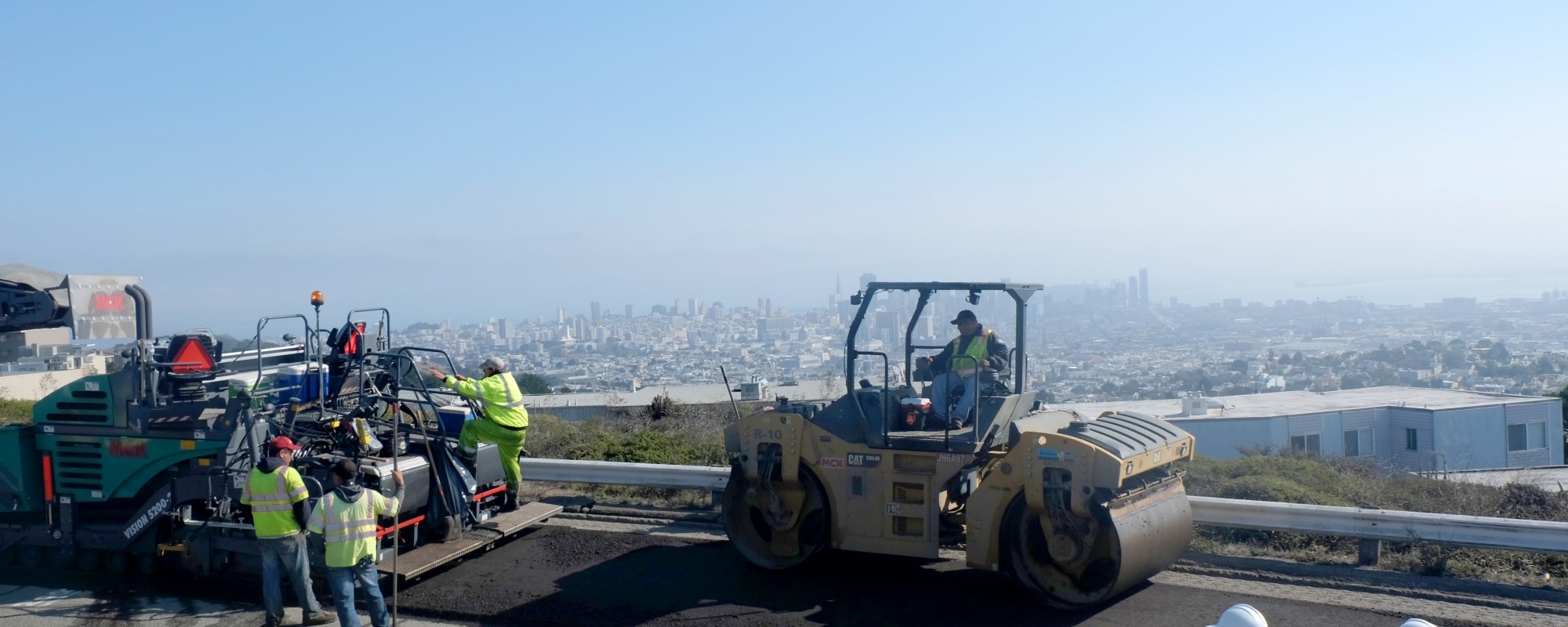PRESS RELEASE: SF Street Pavement Condition Improves for 5th Year in a Row - 1/3/2017
For immediate release: January 3, 2017
Contact: Rachel Gordon, 415-554-6045
San Francisco Street Pavement Condition Improves for Fifth Year in a Row
Voter investments make the ride smoother for drivers, cyclists and transit riders
San Francisco, CA –The City’s regionally tracked roadway condition score continued to climb for the fifth year in a row, Mayor Ed Lee and Public Works Director Mohammed Nuru announced today.
Public Works reported a citywide average Pavement Condition Index score of 69 for 2016, up from a score of 68 in 2015. The information is tracked by the Metropolitan Transportation Commission, which monitors the condition of Bay Area roads.
The City’s Pavement Condition Index score has increased each year for the last five years, thanks in large part to San Francisco voters’ approval of the $248 million Road Repaving and Street Safety Bond in 2011, with additional funding for paving projects added by the mayor and Board of Supervisors during the annual budget process.
“Through these strategic investments, we are seeing the positive impact in every neighborhood,” Mayor Lee said. “The result is smoother roads for drivers, cyclists and public transit riders.”
Prior to the Streets Bond, the citywide Pavement Condition Index score averaged 64 over a 10-year period. The infusion of additional funding allowed for hundreds more blocks to be paved annually. In 2016, Public Works crews and contractors resurfaced 722 blocks. Over the past five years, 3,834 blocks were treated.
The Pavement Condition Index assigns City blocks a score from a low of zero for a badly deteriorated road to a high of 100 for a freshly paved block. Public Works evaluates the impacts of wear, erosion and aging of each street, and assesses street deterioration with a rating for each of the City’s 12,800-plus blocks.
A Pavement Condition Index score of 85-100 is rated as “excellent,” 70-84 “good,” 50-69 “at risk,” and 0-49 “poor.” Currently, nearly two-thirds of San Francisco blocks are rated at good or excellent; less than 15 percent are rated in the poor category.
The assessment is based on visual surveys performed by specially trained and certified staff. Each segment is evaluated based on ride quality, cracking and signs that the roadway may be breaking up in places.
“The continued improvements are a real achievement and show that voter-supported investments in our City’s infrastructure pay off,” Director Nuru said. “With the dedication and the determination of the Public Works paving team, we turned the corner from where we were a decade ago and are moving in the right direction, benefiting San Francisco residents, workers and visitors.”
The average score for San Francisco roads peaked at 77 in the late 1980s and gradually declined down to the low point of 64, where the average score hovered for a decade. If current funding levels are maintained, the citywide average Pavement Condition Index can improve to 70 in fewer than 10 years.
Public Works’ pavement strategy preserves streets in good condition instead of letting them deteriorate. Extending the life of a block in San Francisco that is in good condition currently only costs approximately $35,000. The complete reconstruction of an average sized block in poor or very poor condition, including repairs to the concrete base and the top layer of asphalt, can be as high as $500,000.
The City is responsible for maintaining approximately 940 miles of streets. More information on the Streets Bond can be found at sfpublicworks.org/streetsbond.
About San Francisco Public Works: The 24/7 City agency cleans and resurfaces streets; plants and nurtures City-maintained street trees; designs, constructs and maintains City-owned facilities; inspects streets and sidewalks; builds curb ramps; eradicates graffiti; partners with neighborhoods; trains people for jobs; greens the right of way; and educates our communities.
###



